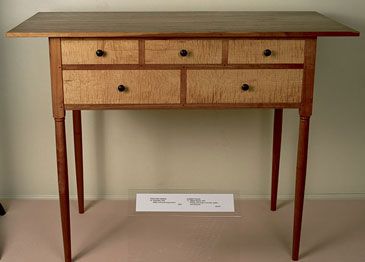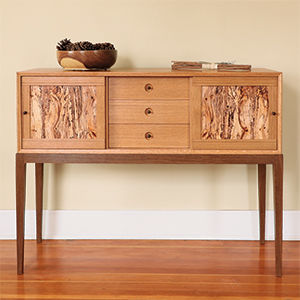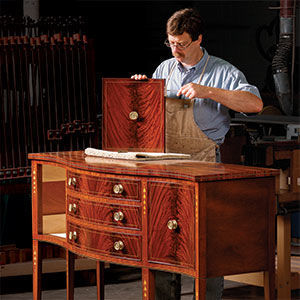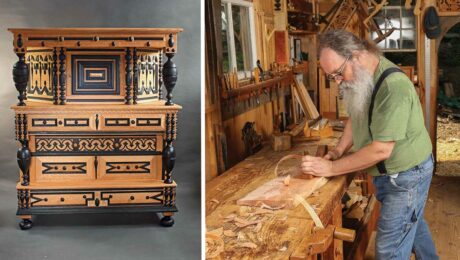A Short History of Sideboards

The first sideboard was doubtless a simple shelf on the wall near a dining table used for plate and food during meals (in distinction to a cupboard which constituted a more permanent repository for plate and cups). The distinction persisted, and led to the development of furniture such as aumbries and court cupboards intended for permanent storage, and separate items used primarily for serving, such as buffets and hunt boards.
Although early sideboards are little more than tables, usually located against the wall, they soon expanded to provide storage for plate in the form of open shelving. By the 18th century, the sideboard had retreated to the kitchen where it became a more utilitarian item sometimes known as a Welsh dresser, containing not only open shelving but also enclosed cupboards below — effectively becoming the ancestor of today’s kitchen cabinetry.
Items deemed worthy of display in living rooms and parlors found a home in display cabinets, essentially more sophisticated versions of dressers, which had begun as low, table-height cupboards used for display in wealthy medieval halls. These dressers eventually acquired open shelving above to become the form now implied by the term.
Credenzas may also fall under this category of furniture. The term is derived from the English term “credence,” although American common usage now prefers the original Italian: credenza.
The origin of the English term is interesting, if no longer pertinent to its contemporary use: As a side table on which food was placed to be tasted for poison before being served (to pope, lord, king, or other important person) it provided the truth or credence of what was being served.
Not only has the name changed (or rather, reverted), but the use of this article has also expanded beyond its original purpose. A credenza is now more commonly understood as a form of flat-topped, longish, table-height cupboard or cabinet, used as a bookcase or display cabinet. Possibly this is because of the similarity to various Renaissance credenzas that were made to rest flat on the ground rather than being elevated on stands or legs (as were the early credenzas — from which were developed pieces including court cupboards, sideboards, and hunt boards.
Graham Blackburn is a furniture maker, author, and illustrator, and publisher of Blackburn Books (www.blackburnbooks.com) in Bearsville, N.Y.





















Log in or create an account to post a comment.
Sign up Log in